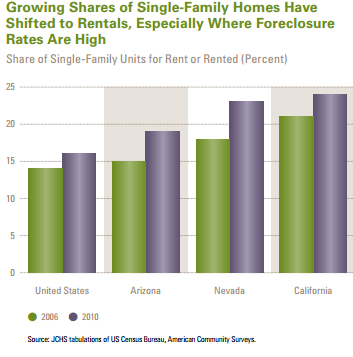The Shifting Landscape of American Housing: Why Single-Family Rentals are on the Rise

In recent years, the United States has witnessed a significant shift in the way people live, work, and perceive homeownership. One of the most notable trends in the American housing market is the growing demand for single-family rentals (SFRs). What was once considered a niche segment has evolved into a thriving industry, captivating the attention of homeowners, renters, and investors alike. But what’s driving this trend? Let’s explore the factors fueling the popularity of SFRs.
Housing Affordability and Changing Priorities
The dream of owning a home has long been an integral part of the American narrative. However, the harsh reality is that homeownership has become increasingly inaccessible to many. The median home price in the United States has risen substantially over the past decade, making it difficult for people to afford a down payment, let alone the ongoing expenses associated with homeownership. As a result, many potential buyers are opting for single-family rentals as a more affordable alternative.
Millennials, in particular, are driving this trend. This demographic is not only struggling with student loan debt and financial insecurity but also reevaluating their priorities. For many, the flexibility and freedom to pursue their passions and interests have become more important than accumulating assets like real estate. SFRs offer the perfect solution, providing a comfortable living space without the long-term commitment and financial burdens of homeownership.
Demographic Shifts and Lifestyle Changes
The demographics of the American population are evolving, and this shift is influencing the demand for SFRs. The rise of the gig economy, remote work, and entrepreneurship has created a generation of people who value flexibility and mobility. SFRs cater to this lifestyle, offering a comfortable living space that can accommodate a family or a solo individual, without the need for long-term contracts.
Additionally, the growing number of single-person households, delayed marriages, and an aging population are contributing to the demand for SFRs. According to the U.S. Census Bureau, over 60% of renters are between the ages of 25 and 44, a demographic that often prioritizes convenience, flexibility, and affordability over traditional homeownership.
Investment Opportunities and Growing Demand
The increasing popularity of SFRs has also caught the attention of investors. Institutional investors, real estate investment trusts (REITs), and private equity firms are pouring billions of dollars into the SFR market, capitalizing on the growing demand. This influx of investment has led to the development of professional SFR platforms, which provide a range of services, from property management to maintenance and repairs.
Moreover, the growth of online platforms and property management software has made it easier for investors to navigate the SFR market. This increased accessibility has led to a rise in individual investors, who can now participate in the market through various crowdfunding platforms and real estate investment apps.
The Single-Family Rental Evolution
The SFR industry is evolving rapidly, with new players entering the market and innovative business models emerging. The emphasis on service and experience has become a differentiating factor, with many SFR operators focusing on providing high-quality amenities, community features, and personalized services.
As the demand for SFRs continues to grow, we can expect to see further innovations in the industry. Technology will play a significant role in shaping the future of SFRs, from virtual property tours and AI-powered property management to smart home features and energy-efficient solutions.
The rise of single-family rentals reflects a fundamental shift in the American housing market. As the country grapples with housing affordability, changing demographics, and evolving lifestyle preferences, SFRs will continue to play a crucial role in providing affordable, flexible, and comfortable living spaces. Whether you’re a homeowner, renter, or investor, it’s essential to understand the driving forces behind this trend and the opportunities it presents for the future of American housing.





